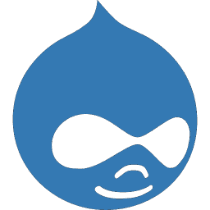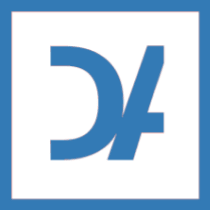Speed up CS-Cart: Proven Technology
- JavaScript
Merge, Compression, Lazy Loading - CSS
Size compression and load optimization - Images
Compression and conversion with CDN OptiPic - Third party widgets
Online consultants, chats, social networks, etc. - Analytics systems
Google Analytics, Facebook,
etc.
What problems and Google Pagespeed Insights recommendations will be improved
Minimize main-thread work
Consider reducing the time spent parsing, compiling and executing JS. You may find delivering smaller JS payloads helps with this.
Eliminate render-blocking resources
Resources are blocking the first paint of your page. Consider delivering critical JS/CSS inline and deferring all non-critical JS/styles.
Reduce unused JavaScript
Reduce unused JavaScript and defer loading scripts until they are required to decrease bytes consumed by network activity.
Reduce unused CSS
Reduce unused rules from stylesheets and defer CSS not used for above-the-fold content to decrease bytes consumed by network activity.
Ensure text remains visible during webfont load
Leverage the font-display CSS feature to ensure text is user-visible while webfonts are loading.
Reduce the impact of third-party code
Third-party code can significantly impact load performance. Limit the number of redundant third-party providers and try to load third-party code after your page has primarily finished loading.
Serve static assets with an efficient cache policy
A long cache lifetime can speed up repeat visits to your page.
Reduce JavaScript execution time
Consider reducing the time spent parsing, compiling, and executing JS. You may find delivering smaller JS payloads helps with this.
Efficiently encode images
Optimized images load faster and consume less cellular data.
Serve images in next-gen formats
Image formats like WebP and AVIF often provide better compression than PNG or JPEG, which means faster downloads and less data consumption.
Check the speed of CS-Cart - specify your website
How to get started with Pagespeed OptiPic service for CS-Cart
Order technology deploy OptiPic:Pagespeed
Wait for the test implementation by OptiPic team
Deposit funds to your account and select a package
Pricing: Deploy + Subscription
One-time payment for deploy. Monthly payment for a subscription.
Включая ускорение бекенда, TTFB, время ответа сервере, время до первого байта
How to increase the speed of CS-Cart on the front-end side (client acceleration)
In addition to compressing the acceleration images CS-Cart on the front-end side, one can also achieve through the optimization of other components:
- Caching of static files on the server side (images, css, js).
- Combining css.
- Compressing css.
- Joining js.
- Compression js.
- Transferring css and js to the bottom of the html code page.
- Disabling unnecessary scripts and widgets.
Accelerating the download CS-Cart on the back-end (server acceleration)
Server-side acceleration is the goal of minimizing page generation time by the server. This is usually promoted by the following methods:
- Changing the hosting or server to a more powerful one
- Optimization of web server settings (apache, nginx, php-fpm).
- Optimize the settings for mysql (or another sub-site that the site uses).
- Caching database queries.
- Caching queries against third-party APIs.
- Caching of everything that is possible (Composite site technology and the like)
- Refactoring and optimization of php-code logic.
The OptiPic experts know all the subtleties of acceleration and are ready to tackle the complex acceleration of your site. Contact us if you need the maximum acceleration of your site.
PageSpeed: Optimizing Your CS-Cart Website
Page speed is a critical factor in ensuring a seamless user experience on your CS-Cart website. A faster loading time can improve user engagement, conversion rates, and overall search engine rankings. In this article, we will explore some key strategies to optimize the page speed of your CS-Cart website.
1. Minimize HTTP Requests
Reducing the number of HTTP requests made by your website can significantly improve its load time. Combine multiple CSS and JavaScript files into a single file each, and use CSS Sprites to reduce the number of image requests. Additionally, consider implementing lazy loading for images and videos that are not immediately visible on the screen.
2. Enable Caching
Caching allows browsers to store certain elements of your website locally, reducing the need to fetch them from the server with each visit. Enable browser caching by setting appropriate cache headers in your CS-Cart configuration. Utilize server-side caching techniques such as Varnish or NGINX to further enhance caching capabilities.
3. Optimize Images
Images often contribute to the largest portion of a web page's size. Resize and compress images to an appropriate resolution and format without compromising quality. Use an image optimization tool or plugin to automate this process and ensure optimal image loading speeds.
4. Minify CSS and JavaScript
Remove unnecessary whitespace, comments, and line breaks from your CSS and JavaScript files to reduce their file size. This can be done manually or through automated tools and plugins. Smaller file sizes result in faster downloads and improved page speed.
5. Utilize Content Delivery Networks (CDNs)
CDNs store your website content on servers located in multiple geographical regions. When a user accesses your site, the CDN delivers the content from the nearest server, reducing latency and improving loading times. Integrate a CDN with your CS-Cart website for faster content delivery to users across the globe.
6. Eliminate Render-Blocking Resources
Render-blocking resources such as JavaScript and CSS files that are necessary for rendering a web page can delay its loading. Optimize the delivery of these resources by leveraging techniques like asynchronous loading or deferred loading. This allows the browser to render the page content while those resources load in the background.
7. Regularly Monitor and Test
Continuously monitor your CS-Cart website's performance using tools like Google PageSpeed Insights or GTmetrix. These tools provide valuable insights into areas that require optimization. Regularly test your page speed improvements to measure their effectiveness and identify any potential bottlenecks.
Conclusion
Improving the page speed of your CS-Cart website is essential for providing visitors with a fast and seamless browsing experience. Implementing the strategies mentioned in this article can help you optimize your website's performance and achieve better search engine rankings, user engagement, and conversion rates. Remember to regularly monitor and test the impact of these optimizations to ensure ongoing improvement.

 Zend Framework
Zend Framework  NetCat
NetCat  Drupal
Drupal  SiteEdit
SiteEdit  WordPress
WordPress  DIAFAN.CMS
DIAFAN.CMS